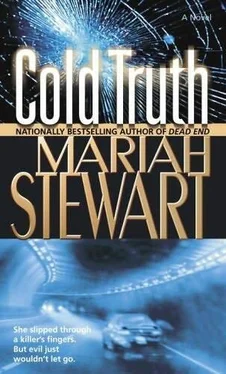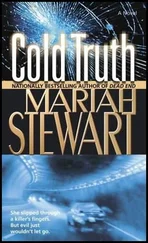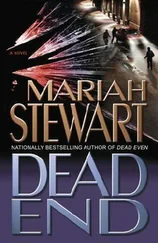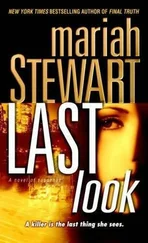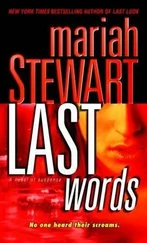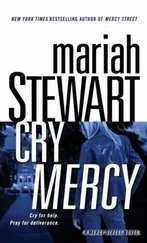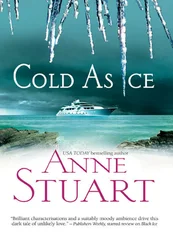By the time his head had cleared, it was already too late. He was dodging bullets, running for the door, and he’d had to leave her there, on the floor.
He was sick with the knowledge that he had only himself to blame.
He should have killed that one-the other one-when he’d had the chance.
Regan was on her second cup of coffee when the doorbell rang on Monday morning. She glanced at the clock: 7:45.
“I’ve got some good news,” Mitch told her when she opened the door, “and some… well, some theories.”
“Give me the good news first.” She waved him in and he followed her down the hall into the kitchen. “Then you can give me theories.”
“The good news is that I have names for two more of the victims on your father’s mystery list.”
Mitch set his black case on the floor next to the kitchen table and took out a folder.
“May 21, 1983. Pittsburgh, Pennsylvania. Elaine Marchand. Age twenty-nine.” He glanced up at her. “Want to take a wild guess on the cause of death?”
“Strangulation. After having been sexually assaulted.”
“The file didn’t specify the order, but that would be my guess.”
“What else do you have there?” She leaned over to peek, and he folded the paper to shield his notes.
“Depends. Are you going to drink all that coffee yourself?” he asked.
“Sorry. I’ll get you a cup.” She went to the cupboard and took out a mug. “You were saying…”
“ Charlotte, North Carolina. February 1, 1986. Raquel Sheriden.” He watched her pour the coffee and waited until she turned back to him. “Age…”
“Late twenties, early thirties. Raped and strangled.”
“You’re good at this,” he deadpanned. “Ever think about working for the government? I hear the FBI is looking for a few good agents.”
She smiled and handed him the mug.
“I’m going to go out on a limb here and guess that none of these murders have been solved.”
“You really are good at this.” He sipped the hot coffee carefully.
“Where did you get all the info?”
“From the Bureau computer files.” He poured half-and-half into the cup and stirred it with the spoon she’d used. “And that’s not all I got.”
“What else?”
“I have a list of over forty other uncannily similar, unsolved murders that have occurred over the past twenty-five years. Same MO. All different parts of the country. Heaviest in the south for several of those years, though. We’ll have to take a look at that.”
“Forty!” Regan’s eyes widened. “Forty…”
“And those were only the ones I was able to find with ease. God knows how many there might be that were never entered into the system.”
“So there could be more.”
“There could be way more,” he said soberly. “Now, of course, we have some work to do to determine if these others were in fact likely victims of our man. We’ll have to take a look at each case individually, but the coincidences are uncanny.”
“What about these other places…” She searched the table for the original list, found it on the bottom of the pile. “ Turkey, Panama, Croatia…” She looked up at him. “How do we find out about those places?”
“That will be a little trickier, but I have someone at the Bureau working on that. In the meantime, look here.” He took two maps from his case and spread one out on the table, moving the coffee cup out of the way. “This is a map of the United States. I’ve circled in red all of the cities we talked about, but it’s a little hard to see, so I bought some colored pushpins. Is there a place we can hang this?”
“How about over there on the basement door?”
“Works for me.” He tacked the upper corners to the door. “This will be fine, as long as no one wants to go downstairs.”
“Show me.” She pointed to the map.
“Let me get the pins in place. We’ll start by pinpointing the places on your dad’s list with red pins.”
“The known victims of the Bayside Strangler.”
“Right.” He proceeded to place red tacks into the map. “Now, for those murders along the Jersey Shore, I’m placing one red tack to represent all, since it was basically one place. Then we had Pittsburgh… Charlotte… Corona… Memphis…”
Regan stepped closer to take a look.
“Are we going to assume that the dates and places on that list represent murders?”
He nodded. “I think it’s a safe assumption. When you look at the whole picture, everything points that way.”
Mitch leaned back against the counter. “I think we agree the Bayside Strangler and the man who committed these other murders are the same person.”
“It certainly looks that way.”
“And I think that whoever he is, and for reasons that we don’t yet understand, he wrote to your father over the years.” Mitch walked back to the table for his mug. “’Hey, Landry, remember me?’”
“He sent Dad notes to keep him up-to-date on his activities. Bragging about his exploits. And my dad started to keep a record of when he received them, and where they were postmarked.”
“We need to find the rest of your father’s files and see what he did with all of this information.”
“He would have turned them over to someone,” Regan said. “Something like this, so many victims in so many areas, he’d have gone straight to the FBI. He’d have kept copies of the letters, but he wouldn’t have kept this to himself.”
“I think we’d have better success searching the file boxes here than we would at the Bureau. Without knowing where he sent the information or to whom, or when, there’s no telling where it might be now. I’ll ask John Mancini to have someone there in the office look into it, but it’s such a long shot, it’s almost not worth the time. Unless an official investigation was started and documented, it will be impossible. With the passage of all these years, you have offices closing or moving, agents dying, retiring, or relocating. Your father’s files may be a mess, but we’re fairly certain that somewhere in the midst of it all we’ll find what we’re looking for. We have no such assurance relying on the Bureau records.”
Regan studied the list again.
“These dates range from the early eighties right through the late nineties. My guess would be that he passed it along as soon as he realized what was happening.”
“You think he understood that the killer was telling him every time he struck?”
“I think my dad would have figured that out. Remember that this was not unusual.” She waved the page at him. “He’d been contacted by killers many times over the past thirty years. Some wanted to confess to him, some wrote to taunt him. Others challenged him. Catch me if you can, that sort of thing.”
“Why your father?”
“It all started with a book he wrote in 1975. He’d interviewed a killer named Willie Miles, who was on death row in Florida for murdering his wives… that would be three former wives. My dad said he’d followed the case for the newspaper he was working for at the time, but thought it was a pretty interesting story.”
“Your dad’s background was in journalism?”
“Yes. Anyway, apparently Willie got chatty on his cell block and talked about how this writer from up north had come to see him, and how he was going to be famous because this writer was going to write a book about him, and one of the other inmates picked up on it. This second one wrote to Dad a few times. I guess he had told someone else there about it, and before my dad knew it, he was getting mail from other men on death row, too. Then some who were not yet on death row, and some from other states. And then some who had not as yet been caught.”
Читать дальше
